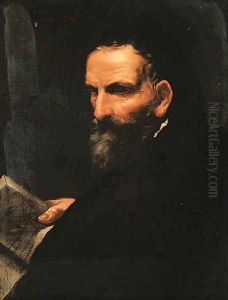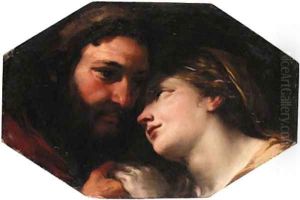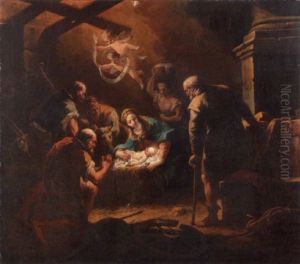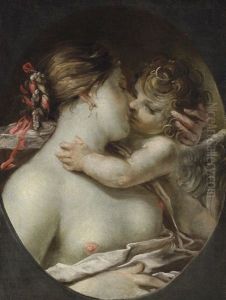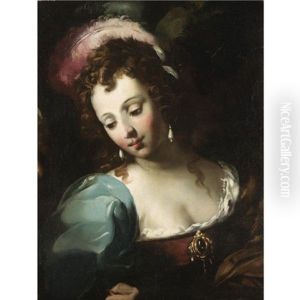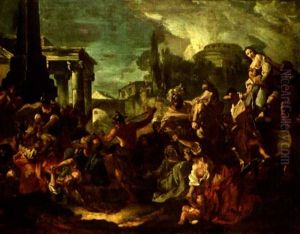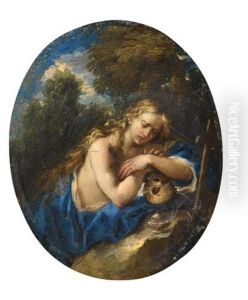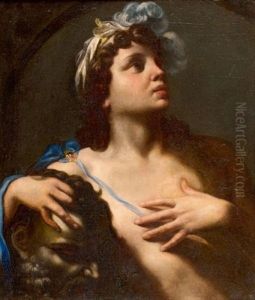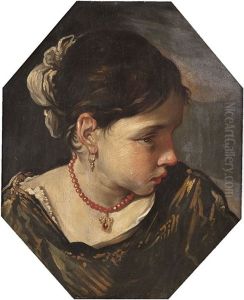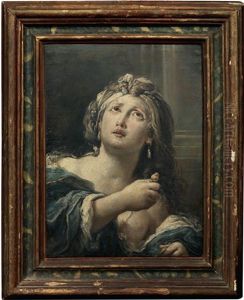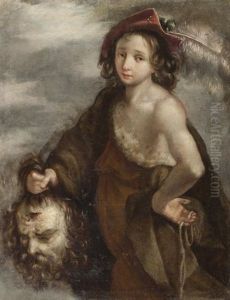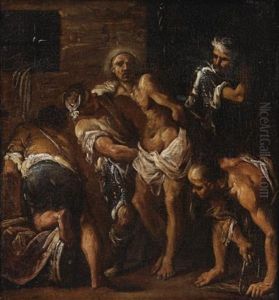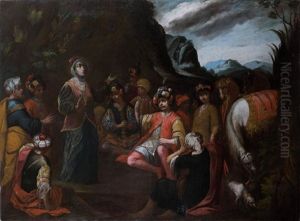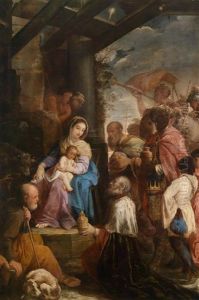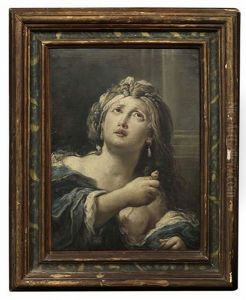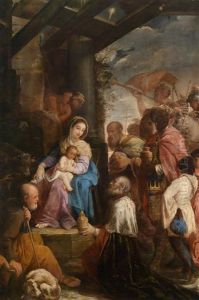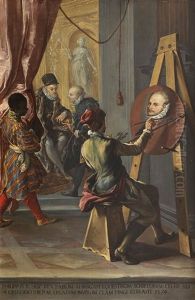Giovanni Antonio Burrini Paintings
Giovanni Antonio Burrini was an Italian painter, born in 1656 in Bologna, a city with a rich artistic heritage that greatly influenced his development as an artist. Burrini's career spanned the late Baroque period, a time marked by dramatic expression, rich colors, and dynamic compositions, elements that Burrini adeptly incorporated into his own work. Despite being somewhat overshadowed by his contemporaries, Burrini's contributions to the Italian Baroque movement were significant, and his work is characterized by its vibrancy, energy, and emotional depth.
Educated in the Bolognese School, Burrini initially apprenticed under Domenico Maria Canuti. His style, however, was also heavily influenced by the works of the Carracci family, Guido Reni, and Guercino, whose techniques he studied and adapted, blending them with his own unique approach to painting. Burrini's work is notable for its use of light and color, as well as the dynamic poses of his figures, which often seem to extend beyond the boundaries of the canvas.
Throughout his career, Burrini received commissions from several prominent institutions and individuals, including churches and members of the aristocracy, for both religious and secular subjects. His versatility allowed him to excel in a variety of formats, from large altarpieces to more intimate cabinet paintings and frescoes. One of his most celebrated works is the fresco cycle in the Palazzo Sagredo in Venice, showcasing his skill in creating complex, multi-figure compositions.
Despite his success, Burrini's work was sometimes criticized by his contemporaries for perceived eccentricities in form and color, criticisms that perhaps have contributed to his relative obscurity in the broader narrative of art history. Nevertheless, his paintings remain a testament to the vibrancy and innovation of the Baroque period, embodying the emotional intensity and dramatic flair that characterize the era.
Giovanni Antonio Burrini died in 1727 in Bologna, leaving behind a body of work that continues to be appreciated for its artistic merit and historical significance. Today, Burrini is recognized as an important figure in the development of late Baroque painting in Italy, with his works held in collections around the world, serving as a vibrant legacy of the era's rich artistic traditions.
